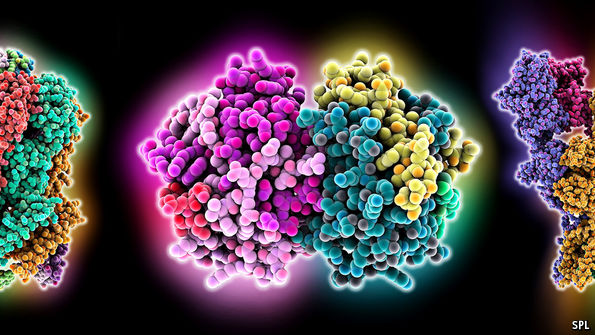How to determine a protein’s shape

ABOUT 120,000 types of protein molecule have yielded up their structures to science. That sounds a lot, but it isn’t. The techniques, such as X-ray crystallography and nuclear-magnetic resonance (NMR), which are used to elucidate such structures do not work on all proteins. Some types are hard to produce or purify in the volumes required. Others do not seem to crystallise at all—a prerequisite for probing them with X-rays. As a consequence, those structures that have been determined include representatives of less than a third of the 16,000 known protein families. Researchers can build reasonable computer models for around another third, because the structures of these resemble ones already known. For the remainder, however, there is nothing to go on.
In addition to this lack of information about protein families, there is a lack of information about those from the species of most interest to researchers: Homo sapiens. Only a quarter of known protein structures are human. A majority of the rest come from bacteria. This paucity is a problem, for in proteins form and function are intimately related. A protein is a chain of…Continue reading
Source: Economist




